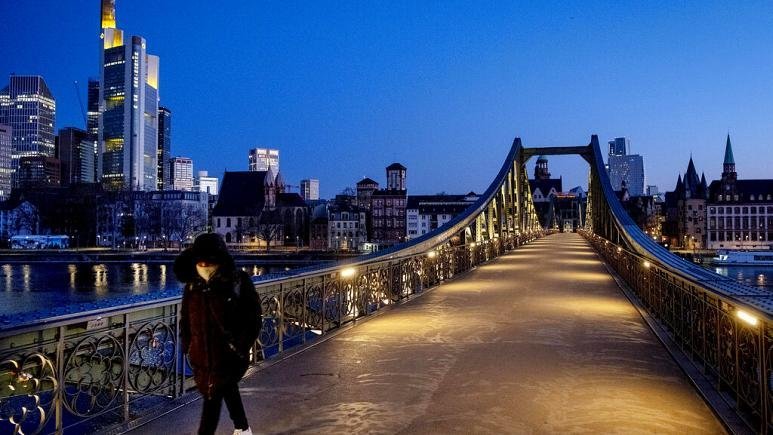「封城」解碼:如何避免變成「瘋城」|Unlocking the Lockdown: How to Stay Safe and Stay Sane
數年前,香港人大概沒想到,「封城」這兩個字會與我們這麼接近。當然,疫症影響的不止香港,英國權威字典Collins Dictionary,前年甚至選出「封城(Lockdown)」為年度之詞,當年的春天,全球已有百多個國家實施封城,世界一半人口、大概39億人被建議或勒令留在家中。封城在各地的成效不一:在歐洲,封城拯救了數百萬人命,但在印度的大城巿,封城卻像溫水煮蛙,原因之一,其實與城市規劃有關。換句話說,一個城巿的規劃基本功做得好,在應付突如其來的疫症時也就愈能發揮保護人們生命財產的效用了。
兩年後的今天,不少國家開始歸納封城經驗,思考空間可以如何應用得更好、增強城市的抗疫能力。而香港,卻仍然被困在封城與否的爭論之中,究竟我們要如何準備?這一期,我們來認真認識一下「封城」這兩個字,其實是什麼回事。
防疫措施嚴厲 香港全球第7
為了觀察及理解各國封城措施,不少學術機構都訂出指標。其中,英國牛津大學OxCGRT訂立了套政府抗疫政策指數(COVID-19 Stringency Index),綜合學校停課、辦公室關閉、在家隔離要求等9項數據,總分為100,得分愈高,代表措施愈嚴格。截至今年3月20日數字,香港排行全球第7位,總分為75,比兩年前同月上升近26分;常一併比較的新加坡,現時排行34位,分數為60.19;排行第一的,則是島國瓦努阿圖。
亦有學者將全球的防疫措施劃分為4類:無居家防疫措施、建議留家、要求留在家中(但可以外出運動、買餸、要事出行),以及嚴厲的居家令(例如一戶只有一人可以外出)。2020年3月底,大部分國家都是採取後兩者、即較強硬的居家措施。兩年後的3月,歐洲、美加、澳紐等國已放鬆防疫措施;只有不丹、老撾仍然採取最嚴厲的居家令。
封城「得益者」:環境、生態、學生
封城重挫經濟,但也帶來意外收穫,最明顯的,是地球的環境因此而得到改善:2020年全球碳排放減少了24億噸,自二戰以來跌幅最大;人類在海洋製造的嘈音降低20%,有助修復海洋生態。
至於人類生活,英國劍橋大學在2020年第一次封城後,邀請逾17000名8至18歲學生參加問卷調查,三分之一人表示封城期間,他們更快樂,可以減少寂寞與被欺凌的機會、增加睡眠及運動時間。因為疫症改變了學生的上學模式,這研究令當地教育界重新思考及改良的學習環境及模式。
人口密度高 封城要訣:需先做好城巿規劃
有人說,因為香港人口密度高,封城在香港未必有效。這種說法,除了可以用沙盤推演的方法判斷後,我們可以借其他人口密集,又曾經封城的城巿作參考嗎?人口密度比香港更高的印度,當地曾經有學者運用城市抗疫指數(Covid Vulnerability Index),嘗試找出影響封城及社交距離的成效的因素。被稱為「印度Covid-19傳播熱點」的孟買,人口密集、房子老舊、家中無獨立房間、缺乏乾淨食水等,都導致封城如溫水煮蛙,無助大眾遠離病毒。當地建築師說,原本的貧民窟人民安置計劃,只是一味將家庭搬到高樓,採光及通風惡劣,公眾健康、公眾空間從不在考慮之列,直至疫情來襲,地方政府才知道,如果要做到有效的社交限制,計算人口密度是重中之重。
那麼,話說回頭,在防疫之中,建築師、規劃師等有什麼可以做呢?從外國的經驗看來,應對流行病及突發衛生事件的能力,對城市抗疫力非常重要,當中建築及規劃的災害管理亦是重要一環;而最重要的,當然是毋忘設計師的初心、留意人們的需要變化,才能讓城市設計貼地合時,正如在疫情底下,全球已出現不少新的空間運用,例如混合型辦公室、馬路改為行人專用區、帳蓬學校等。
地點:香港、英國、印度
圖片:網上
Before the COVID-19 pandemic hit the city, Hongkongers probably never imagined that the city would be one day be on the brink of a lockdown. Of course, Hong Kong is not alone in living through the pandemic.
Two years ago, Collins Dictionary selected “lockdown” as the Word of the Year 2020, suggesting how the word has come to encapsulate the story of people around the world fighting the deadly virus through mandatory isolation. In early 2020, more than 100 countries implemented strict confinement measures in response to the spread of COVID-19. Half of the world’s population, around 3.9 billion people, were advised or required to stay at home. However, the effectiveness of lockdowns varied from place to place. Statistical studies suggested lockdowns in Europe had saved millions of lives, while in Indian cities, lockdowns had at best only slowed down, but could not prevent the spread of COVID-19. Further investigation uncovered the link between urban design and the efficacy of lockdown. In other words, cities which are well-planned were better at protecting people’s lives and properties when faced with pandemic-induced challenges.
After more than two years since the onset of COVID-19, many governments around the world have recovered from battles with the pandemic and are reviewing their experiences to rethink how improvements to urban planning could strengthen the city’s resilience to outbreaks. However, Hong Kong is still stuck in a quandary over the necessity and benefit of having a citywide lockdown.
Amidst these discussions and controversies, let us learn more about lockdowns and prepare ourselves in case it really happens.
Tough COVID-19 policies: Hong Kong ranks 7th worldwide
Different academic institutes have created indices to analyse lockdown policies around the world. One of them is the Oxford COVID-19 Government Response Tracker (OxCGRT) designed by Oxford University. OxCGRT consolidates a total of nine policy indicator values into a “Stringency Index” running from 0 to 100. The index measures governments’ responses related to closure and containment, as well as health and economic policies, covering school and office closures, and home isolation. A higher position in the index implies more restrictive measures were put in place. As of 20 March 2022, Hong Kong had a score of 75 and was ranked 7th globally, marking an increase of 26 points in just two months! Singapore, Hong Kong’s de-facto rival city-state, currently ranks 34th with a score of 60.19. The highest-ranking region currently, is the island state of Vanuatu.
Another study took an different approach by dividing containment policies into four levels. The least severe level looks at whether lockdown policies were implemented. The next level, whether people had been advised to stay at home, followed by whether people are required to stay at home (but allowed to leave for certain purposes, such as shopping for basic necessities, exercise, and travelling for particular purposes). The fourth and most severe level tracks whether stringent stay-at-home orders were issued (for instance, only one person per household is allowed to leave).
Back in late March 2020 at the onset of COVID-19 pandemic, the third and fourth categories were commonly adopted by most governments around the world, as they believed in the need for severe lockdowns to keep the disease at bay. At present, most countries in Europe, the Americas, Australia and New Zealand have lifted lockdown measures. Countries such as Bhutan and Laos, are the few remaining ones which decided to adhere to strict confinement policies.
What benefits lockdowns bring: Perspectives from the environment, ecosystem, and students
On one hand, COVID-19 has taken its toll on global economy. On the other hand, the crisis has surprisingly turned out to be a boon for our planet. In 2020, the world reduced 24 billion tons of fossil fuel emission, the largest fall since Second World War. Ocean noise caused by human activities fell dramatically by 20%, allowing marine ecosystems to recover.
Apart from saving the planet, studies also showed the pandemic has saved students’ mental health. After the first lockdown in 2020, the University of Cambridge conducted a survey and collected data from over 17,000 students aged between 8 and 18, who had received home-based lessons. A third of respondents said that they were happier during the lockdown period as they felt less lonely and experienced less bullying. Student could also sleep longer and exercise more often. These survey results prompted schools and educators to review and improve the current learning models.
Lessons learnt: Good urban planning is key to effective lockdown in densely populated cities
Many people think lockdowns might not be practical or effective in a densely packed city like Hong Kong. Other than running simulations to assess the validity of such assumption, we could perhaps take reference from other densely populated cities that have imposed lockdowns previously.
Scholars studying Indian cities more densely populated than Hong Kong, introduced the “COVID Vulnerability Index” to investigate the effectiveness of social distancing and lockdown measures in relation to a city’s urban conditions. The study of Mumbai, dubbed “India’s COVID-19 hotspot”, identified multiple factors that contributed to the rapid spread of COVID-19 in the city.
In general, many people in Mumbai live in dire conditions. Families share one single room in old and dilapidated residential buildings, often without access to clean drinking water. Confinement in such environment increases the livelihood of spreading diseases, instead of containing it. According to architects in Mumbai, efforts to rehabilitate the living environment of slum dwellers failed to improve their well-being. Many were simply relocated to high-rise buildings with poor ventilation and insufficient sunlight. Before the pandemic, local governments did not seriously consider the importance of open space to improve the public health of slum dwellers. The pandemic made them realise how effective control over population density is vital for effective social distancing measures.
Studying how other cities cope with the pandemic offers valuable insights for Hong Kong’s battle against COVID-19. For example, town planners and architects play a key role in building a resilient city with the capability to manage crises and deal with epidemics.
COVID-19 is also a wake-up call to reimagine our city’s functions, and explore how private and public spaces could be repurposed innovatively during this outbreak by creating hybrid office spaces that facilitate remote working and in-person collaborations, pedestrianizing streets to create more open spaces, and conducting lessons in tents to prevent overcrowding in schools. These examples offer policymakers, architects, designers, and all of us a glimpse into the potential of creative placemaking in cities and a reminder to be receptive and responsive to the needs of city residents they serve.
Location: Hong Kong, UK, India
Image: Internet
你可能對以下吉人吉事有興趣:
You may also be interested in these GUTS Stories:


















